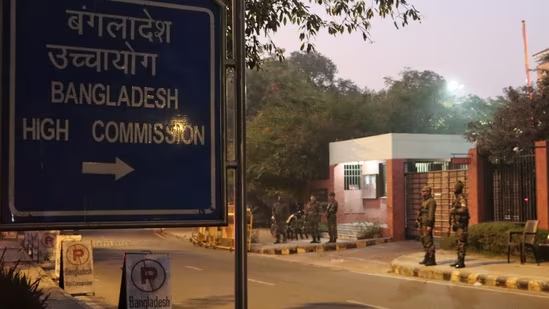Chandra Grahan 2023: Here is everything you need to know about the partial lunar eclipse on Sunday, October 29.
Lunar eclipse October 2023: Lunar eclipses usually follow solar eclipses. So even though the rare “ring of fire” solar eclipse on October 14 was not visible in India, we are set to be treated to a partial lunar eclipse between on Sunday, October 29.
When is the eclipse, and is it visible in India?
The eclipse will be visible in any location where the Moon is above the horizon at the time. This includes parts of Asia, Russia, Africa, the Americas, Europe, Antarctica and Oceania. And yes, the eclipse will be visible in India.
If you are trying to view the eclipse from New Delhi, it will be visible in the southwestern part of the sky, with the Moon lying about 62 degrees above the horizon at the time of greatest eclipse, according to astronomy guide In the Sky. Maximum eclipse will be at 1.45 AM IST when 12 per cent of the Moon will be covered by the Earth’s shadow.
What happens during a lunar eclipse?
Lunar eclipses occur when the Earth is positioned almost exactly between the Moon and the Sun, causing the shadow of our planet to fall on the Moon’s surface. During a partial eclipse, part of the Moon appears darkened, while during a total eclipse, the Moon sometimes turns a red colour.
What is the difference between a total and partial eclipse?
When the Sun, Moon and Earth align imperfectly, like on October 29, you get what is known as a partial solar eclipse. This means that only part of the Moon will pass through the planet’s umbra, which is the dark part of its shadow. During a partial eclipse, a shadow will grow on a Moon till it reaches a peak. In this case, the shadow will cover about 12 per cent of the Moon. After that point, it will recede until we get a normal full Moon again.
Things are slightly different with a total lunar eclipse. In that case, the Sun, the Earth and the Moon align perfectly at one point during the eclipse. It starts off just like a partial eclipse but at its peak, the Earth’s umbra will cover the whole Moon. At that point, the only light reaching the Moon will be the rays that pass through our planet’s atmosphere.
Our atmosphere scatters the lower (bluer) wavelengths of light due to a process called Rayleigh scattering. This also means that only the higher (redder) wavelengths of light. This is why the Moon will sometimes appear blue, creating a “Blood Moon.”
How can you watch the lunar eclipse?
Unlike a solar eclipse, a lunar eclipse is completely safe to view with the naked eye. Just find an unobstructed view of the sky in the direction in which the Moon will be and find a comfortable spot to watch it. You can also use binoculars or a telescope to get a better view.

































